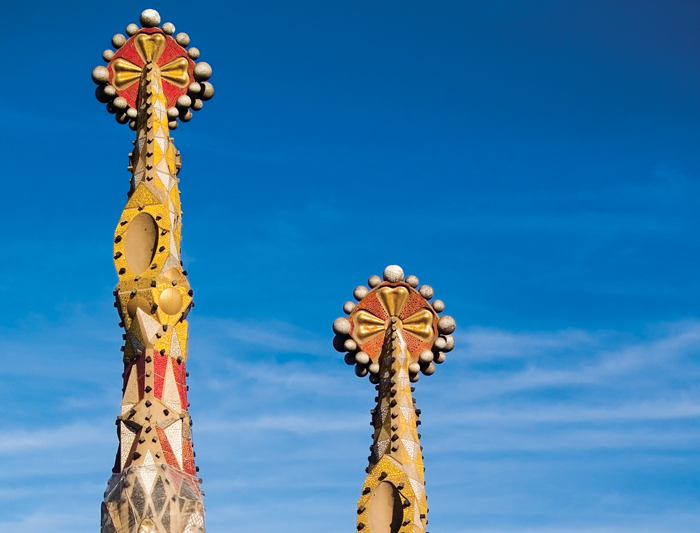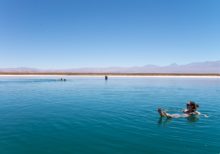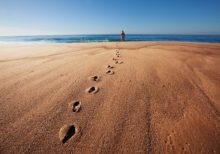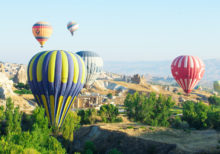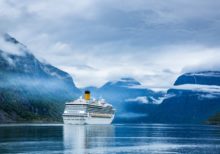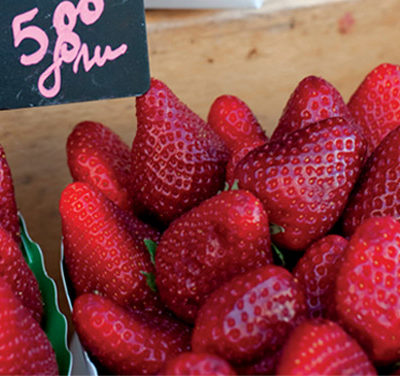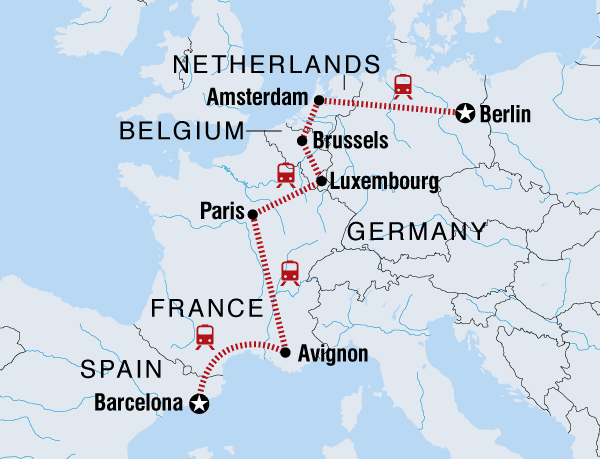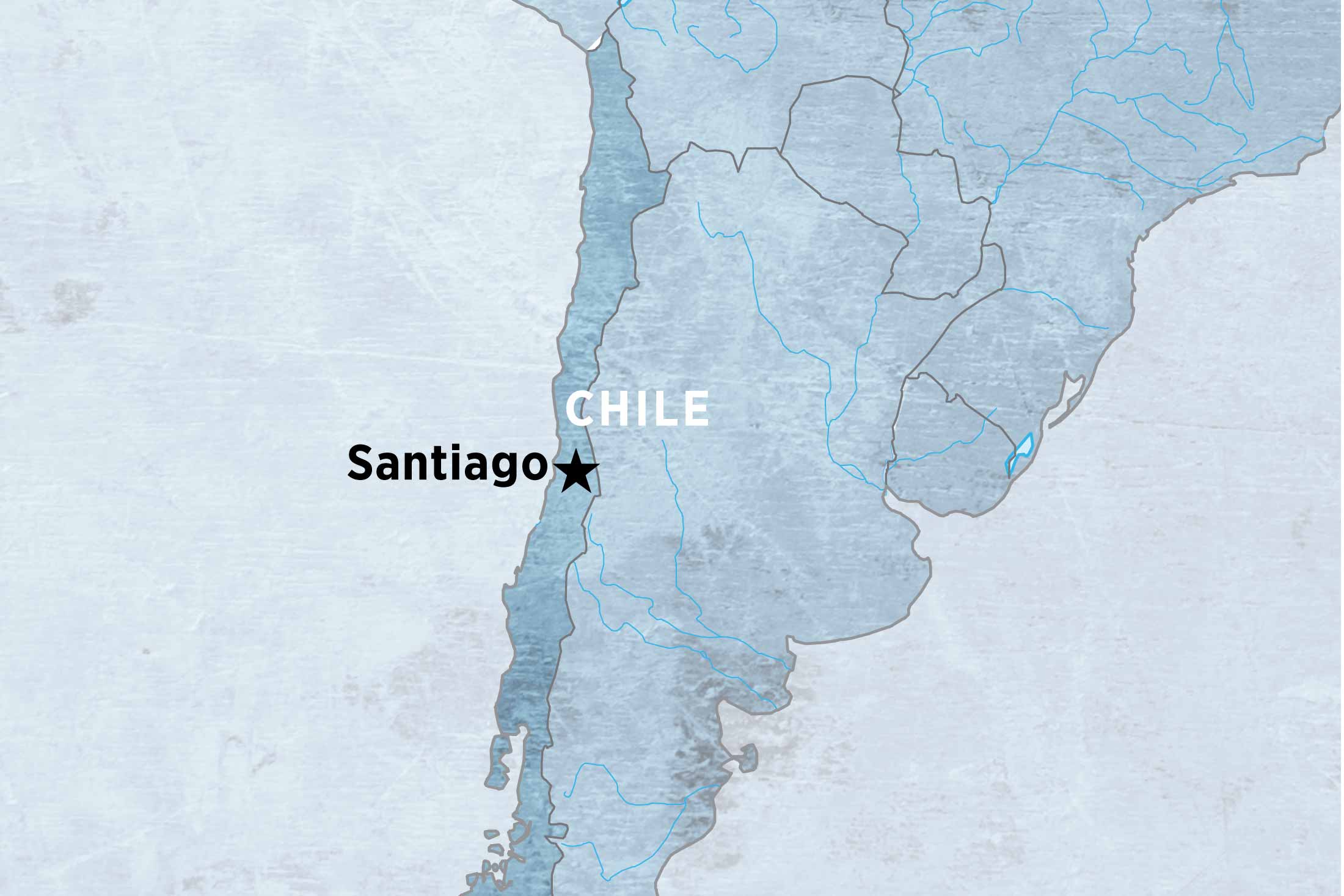| Starts | Madrid, Spain |
|---|---|
| Ends | Barcelona, Spain |
| Region | Spain |
| Duration | 15 days |
| Tour Operator | Intrepid Travel |

Itinerary
Day 1 - Starting: Madrid & Finishing: Madrid
Welcome to Madrid, Spain. The sassy central capital is known for its elegant boulevards and expansive, manicured parks, but it also pulsates with energy, and is without doubt a vibrant city. Your adventure begins with a welcome meeting at around 7pm – double check with reception to confirm the time and place. If you're going to be late, please inform the hotel reception. We'll be collecting your insurance, passport details and next of kin information at this meeting, so please have these on hand. If you can't arrange a flight that will have you arrive at the hotel by early evening, you may wish to arrive early. We'll be happy to book additional accommodation for you (subject to availability). As there's limited time for sightseeing in Madrid, we recommend arriving a few days early to explore. Perhaps while away the hours along the Paseo del Arte, or Art Walk, for an expansive history of Western art. Start with the Museo del Prado, then discover modern Spanish masters, including Picasso and Dali, in the Museo Reina Sofia. Finish at the Museo Thyssen-Bornemisza, which displays eight centuries of European painting. After the welcome meeting, perhaps get into the mind of a Madrileño with some tapas and Rioja, or head to the Gran Via hotspots to dance the night away.
Day 2 - Starting: Granada & Finishing: Granada
Take a bus to Granada today (approximately 4.5 hours). Located at the foot of the Sierra Nevada Mountains, Granada is packed with Moorish architecture, great tapas bars and natural beauty. Take a walk around the old Arab quarter of the Albaicin, a labyrinth of crooked alleys, fountains, plazas and whitewashed houses, or the 'Alcaiceria' (old silk market area) and observe the craftworks on sale that include ceramics, marquetry and leather goods. If you're feeling energetic, climb the steep streets up to the Mirador de San Nicolas for sunset views over the famous Alhambra. If you have time, perhaps check out the historic Renaissance Catedral and Capilla Real. Granada is the kind of city to leave your guidebook behind and trust your intuition. Discovering the narrow streets of Albaicin and the white-walled house garden of Realejo quarter may lead your adventurous spirit to find something that you have long been looking for. For the best view of Granada at sunset try the Mirador de San Nicolas at the very top of the city's steep streets. In the evening, perhaps head to one of the small flamenco taverns around the city.
Day 3 - Starting: Granada & Finishing: Granada
Today make a visit to Granada's impressive Alhambra Palace. An entrance ticket is included in the trip and grants you the visit of Nasrid Palace and the Gardens. Audio guides in multiple languages are available on the day for EUR 4. The Alhambra was first built by the Moors as a fortress during the Muslim rule of Spain. A walk through the compound's luxurious rooms and gardens gives you an idea of the decadent lifestyle of the Moorish kings. The Alhambra is made up of three parts: the Alcazaba, the 11th-century Muslim wing which features spectacular views from its towers; the Palacio Nazaries, the centre of the complex; and Generalife, the summer palace of the sultans. This evening, unearth the restaurants in the tangled streets of the Albaicin and dine with the best views of the Alhambra. Note: If you would like to take an in-depth guided tour of the Alhambra or enter the gardens and palace at night time, we strongly recommend you book tickets in advance. You can reserve these online at alhambra-tickets.es. To collect your tickets you will need to present the credit card that was used to make the booking. A maximum of 10 tickets may be bought for the same day on the same card. Please book any tickets for your second day in Granada only. Included tickets are usually booked for the morning but that depends on availability. Entrance to Nasrid Palace is booked for particular time (please enquire 3 weeks before your departure if you would like to know the time). Apart from that, you are free to spend as much time within the whole complex and gardens as you wish.
Day 4 - Starting: Seville & Finishing: Seville
Travel approximately 2.5 hours by bus and train to the vibrant city of Seville. If the legends are to be believed, Seville was founded by Hercules and its origins are linked with the Tartessian civilisation. To the Romans it was Hispalis, to the Moorsm Isbiliya. After the Christian reconquest, it became thought of as the portal to the 'New World', and is today the capital of Andalucia and the largest city in southern Spain. Known for its important monuments and fascinating history, Seville is universally famous for being a joyous town. Sevillians are well known for their wit and sparkle, and the city itself is striking for its vitality and flamboyance – the city of Carmen, Don Juan and Figaro. Seville is also famous for its oranges, tapas and flamenco, all three of which are ingrained in the fabric of the city and its proud people. As the rest of the day is free for you to explore, why not go and experience it all in person. Barrio Santa Cruz, with its multicultural history, is a great place to start. This shaded warren was designed in medieval times to provide refuge from the great Andalusian heat. Or maybe spend your evening San Jacinto, the bustling main street of the Triana quarter, and discover the interesting and adventurous food on offer.
Day 5 - Starting: Seville & Finishing: Seville
Today is a free day to discover Seville. Checking out the world's largest Gothic cathedral is a must. You can also the climb the cathedral's adjoining Moorish tower, known as La Giralda. While you might have to line up, it's well worth it for the views over the city. Visit the magnificent Alcazar, a complex of palaces used by Moorish and Christian rulers through the ages, and now gaining international fame as a shooting location for ‘Game of Thrones’. Wander through the fragrant gardens and examine the Moorish and Mudejar architecture. If you feel like an injection of culture, explore Seville's Museum of Fine Arts or the Archaeological Museum, or head to the Real Maestranza Bullring for insight into the Spanish tradition of bull fighting. As Seville is the tapas capital of Spain, be sure to sample some of the tasty morsels on offer in one of the city's many tapas bars. In the evening, catch a local flamenco performance with the group (included). Charged with emotion and drama, this powerful, fiery show is a real highlight.
Day 6 - Starting: Costa de la Luz & Finishing: Costa de la Luz
Today travel south to the Costa de la Luz (Coast of Light) (approximately 3 hours). On the western side of Andalusia, the coast faces the Mediterranean and North Africa. Your base for the next two nights is Tarifa, a laid-back beach town endowed with spectacular rocky scenery, a sea fortress, a lighthouse and plenty of character. The afternoon is free to relax. Perhaps catch a bus to the 10 kilometre-long sands of Playa de Los Lances – a haven for kite surfers – or hole up at a beach bar on Playa de Valdevaqueros. One of the best ways to appreciate the area is simply to wander, along the promenade under the old castle, past restaurants brimming with fresh seafood, and appreciate this rare underdeveloped stretch of Spanish coastline. The surfers lend the old town a laid-back, international vibe, along with hints of the North Africa that lies just across the water. In the evening, why not grab some dinner in town and join in Tarifa's vibrant nightlife.
Day 7 - Starting: Costa de la Luz & Finishing: Costa de la Luz
Today there are plenty of optional activities to choose from today. Perhaps head out on a whale and dolphin watching expedition on the Iberian Peninsula. At this unique place, where the Mediterranean Sea meets the Atlantic Ocean and where Europe meets Africa, you will get the chance to see seven different species of whales and dolphins. Alternatively, take a day trip to Northern Africa and the town of Tangier in Morocco, just 45 minutes away by ferry. Once a hotspot for artists, secret agents and millionaires, Tangier has been going through something of a renaissance of late. The city's medina and kasbah are well worth exploring, as are the cafes and patisseries around the Place de la France in the Ville Nouvelle. You can unwind and take in the charms of the city on the recently reconstructed beach promenade. Another interesting option is a day tour across the border to the British territory of Gibraltar, home to the famous Rock of Gibraltar. Here you can take a cable car up to the rock’s peak, explore formation-filled caves, a Moorish castle, and wander the main street, discovering the interesting blend of old British life and Spanish flavours.
Day 8 - Starting: Ronda & Finishing: Ronda
Leave the coast and head inland by bus and train to the town of Ronda in the Andalucian hills (approximately four hours altogether). Arrive in Ronda by lunch time, enjoy an orientation walk with your leader, and the rest of the afternoon is then free. Ronda is the birthplace of bullfighting in Spain. The Plaza de Toros is one of the oldest bullfighting rings in the country. Adjoining the bullring is the Bullfighting Museum, which displays relics of Ronda's bullfighting history. The highlight of the town is the spectacular Puente Nuevo (New Bridge), one of the most photographed structures the country. Built in 1751, it bridges the 100-metre deep gorge that splits the town in two. Check out the old Moorish town on one side, home to many historic buildings including the House of the Moorish King, and the newer El Mercadillo on the other side. East of the town are well-preserved Arab Baths and of course, the famous Plaza de Toros. In the evening find a spot from which you could enjoy a scenic sunset; this won’t be a problem in Ronda. Note: While bullfighting is a significant part of Spanish culture and history, its practice is contrary to our Responsible Travel philosophy. Intrepid does not support or attend bullfights, as the bulls are subject to torment and fear and are often killed inhumanely. Long a controversial issue in Spain, a landmark decision in July 2010 banned bullfighting in the state of Catalonia from January 2012
Day 9 - Starting: Cordoba & Finishing: Cordoba
If you haven't done so yesterday, take your chance now to visit the spectacular gorge in Ronda. In the afternoon, hop on a train headed to Cordoba. On arrival, take part in an orientation walk and then the evening is free to enjoy at your leisure. Perhaps head out and sample some delicious Spanish cuisine, including salmorejo (a cold soup made of tomatoes, bread and olive oil served with chopped up boiled egg and cured ham) or rabo de toro (oxtail soup), which are specialties of Cordoba. There are also plenty of good-value eateries in the Juderia (Jewish Quarter).
Day 10 - Starting: Cordoba & Finishing: Cordoba
Muslim, Jewish and Christian influences are present in Cordoba's architecture, culture and cuisine. Today the group will visit the famous Mezquita - once the third largest mosque in the world and one of the most beautiful. It was consecrated into a Roman Catholic cathedral in the 13th century when the Christians reconquered Cordoba. Later on you are free to enjoy Cordoba as you wish. You might like to discover Casa de las Cabezas (House of Heads), magnificent example of an aristocratic house from Middle Ages. The most thrilling legend of Cordoba about Seven Infants of Lara, was born here. Legend has it that the mansion was a stronghold of Almanzor who held nobleman Gonzalo Gustioz captive here. His seven sons, known as the infants of Lara, were killed in an ambush while trying to free him. Their heads were speared in the lane, one head per arch, therefore the name of the house. In the late afternoon, perhaps stroll along Rio Guadalquivir and cross the Puente Romano. Capture a great view of the Mezquita from the Torre de Calahorra before heading out for a dinner (at your own expense) in one of many great restaurants in the city. Salmorejo and flamenquín: a thick, creamy soup of tomato and garlic, served cold with chopped boiled egg, and a roll of ham and veal, bread crumbed, fried in olive oil and cut into pieces is something you will never regret trying in Cordoba.
Day 11 - Starting: Valencia & Finishing: Valencia
Take a train and head east to the coastal town of Valencia (approximately 5 hours). Known for being the Spanish gateway to the Mediterranean, Valencia has a large port, beautiful beaches, restaurants and a beach promenade along the waterfront. The old town is set back from the seafront through, and in the centre you will find the beautiful monuments and historical buildings. Busy markets, clean beaches, spectacular mountains and a fascinating mix of old town and new town makes up the best of Valencia. Over the next couple of days, you have a lot of free time to wander around the city and see the sights. Perhaps rent a bike from one of the many bike stations that are dotted around the city. Cycle through the park that runs through the centre of the city to the impressively designed Museu de les Ciencies Príncipe Felipe (Arts and Science Museum). Valencia is also built with separate cycle paths, so it's really easy to get around. This evening perhaps head out to bar-hop and eat tapas in the Ciutat Vella (old town).
Day 12 - Starting: Valencia & Finishing: Valencia
Take the day to explore. Why not do as the locals do and start the day with a breakfast of tortillas or churros at the colourful stalls of the Mercado Central. Then, visit the 13th-century cathedral, which houses what's claimed to be the Holy Grail, and climb the 207 steps of the Miguelete tower for the best views of the city. For something a little quirkier, head to the Museum of the Fallas, which contains a history of the Valencia fire festival and giant papier mache figures that have been spared from the burning. The Museo de Bellas Artes has Spain's second-biggest art collection, housed in a beautiful 17th-century convent. There are also many fine parks and gardens, or you may want to head to the beach of Playa de la Malvarrosa to soak up some sun. To try the paella that Valencia is famous for (rabbit and chicken), do as the locals do and head to the restaurant area of Las Arenas for a hearty and reasonably priced lunch. Tonight, maybe head south to Ruzafa, one of the city’s coolest areas, where the locals only start to head out as the clock strikes midnight.
Day 13 - Starting: Barcelona & Finishing: Barcelona
Today take the train up the coast to Barcelona (approximately 3.5 hours). Barcelona's quirky character and fabulous Catalan cuisine mixes seamlessly with a groundbreaking art scene, Gothic architecture, superb dining and a non-stop nightlife, making it a city you won't soon forget. In the afternoon, there are plenty of options to keep you busy. Wander the labyrinthine streets of the old Gothic Quarter and navigate your way through the throngs of tourists along La Rambla, Barcelona's famous tree-lined boulevard. Maybe grab a fresh juice at the colourful La Boqueria market while you're there. Perhaps pay a visit to the Picasso Museum, the National Art Museum of Catalonia or the Museum of City History to brush up on your local knowledge. Take the funicular to the top of Montjuic or Tibidabo for panoramic views of Barcelona and the harbour. The heart of Catalonia prides itself as a gastronomic centre and so this evening perhaps head out to taste the reputation for yourself. You can take a tapas crawl through rustic Catalan dishes in the funky neighbourhood of El Born.
Day 14 - Starting: Barcelona & Finishing: Barcelona
Join your leader on an orientation walk around Barcelona today. See some of the city's main sights, including a visit to Antonio Gaudi's incredible La Sagrada Familia Cathedral. The architect worked on this hugely ambitious project for decades until his death, and it remains in constant construction. Along with the Camp Nou football stadium, it is possibly the city's most iconic landmark. Gaudi was the master of the unique Catalan Modernista architecture for which Barcelona is famous, and his work is dotted all over the city. Perhaps check out the Neo-Gothic mansion of Guell Palace, or the wave-inspired structure of Casa Batlo. For more insight into the artist himself, head to the Gaudi House Museum inside Parc Guell, which is home to more colourful sculptures, including a long mosaic-covered bench overlooking the city. For something a little different, perhaps have a poke around the Old Santa Creu Hospital. For your final night, perhaps finish the day with a sip of red wine from a porro – a traditional glass pitcher.
Day 15 - Starting: Barcelona & Finishing: Barcelona
Today your Spanish adventure comes to an end in the morning. There are no more activities planned and you're free to leave the accommodation at any time. If you'd like to spend a few more days in Barcelona, then our reservations team can help book accommodation (subject to availability).
View Dates


